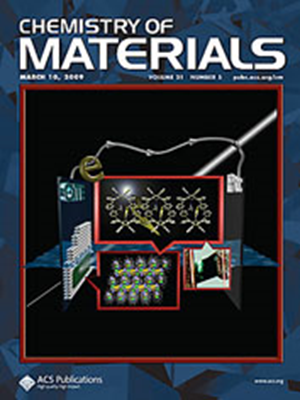Coordination of Mg(II) Enhancing Photoinduced Oxidase-Like Activity of Carbon Dots for Efficient Degradation of Organic Dyes
IF 7.2
2区 材料科学
Q2 CHEMISTRY, PHYSICAL
引用次数: 0
Abstract
Water pollution caused by organic dyes not only seriously damages the ecological environment but also poses a great threat to human health. Herein, the doping of Mg(II) enhancing the photoinduced oxidase-like activity of carbon dots (CDs) in a wide pH range from 2.3 to 8.2 is reported. The Mg-CDs catalyze the generation of superoxide anions (O2•–) and singlet oxygen (1O2) from dissolved oxygen under light irradiation. Compared to CDs without Mg(II) doping, Mg-CDs exhibit much higher photoinduced oxidase-like activity (more than 250%) because the coordination of Mg(II) facilitates the content ratio of enol to ketone, enhancing the rigidity of the π-system and boosting the electron transition within CDs. A universal strategy for degrading organic dyes, including azo, triphenylmethane alkaline, and alkaline azo dyes, is constructed based on the remarkable photoinduced oxidase-like performance of Mg-CDs. The degradation rates of methyl orange, crystal violet, and rhodamine B are 92.2%, 96.5%, and 98.5%, respectively. Our findings provide a strategy to design desirable photoinduced nanozymes for water pollution control and demonstrate great potential of metal-doped CDs in photocatalysis.

求助全文
约1分钟内获得全文
求助全文
来源期刊

Chemistry of Materials
工程技术-材料科学:综合
CiteScore
14.10
自引率
5.80%
发文量
929
审稿时长
1.5 months
期刊介绍:
The journal Chemistry of Materials focuses on publishing original research at the intersection of materials science and chemistry. The studies published in the journal involve chemistry as a prominent component and explore topics such as the design, synthesis, characterization, processing, understanding, and application of functional or potentially functional materials. The journal covers various areas of interest, including inorganic and organic solid-state chemistry, nanomaterials, biomaterials, thin films and polymers, and composite/hybrid materials. The journal particularly seeks papers that highlight the creation or development of innovative materials with novel optical, electrical, magnetic, catalytic, or mechanical properties. It is essential that manuscripts on these topics have a primary focus on the chemistry of materials and represent a significant advancement compared to prior research. Before external reviews are sought, submitted manuscripts undergo a review process by a minimum of two editors to ensure their appropriateness for the journal and the presence of sufficient evidence of a significant advance that will be of broad interest to the materials chemistry community.
 求助内容:
求助内容: 应助结果提醒方式:
应助结果提醒方式:


